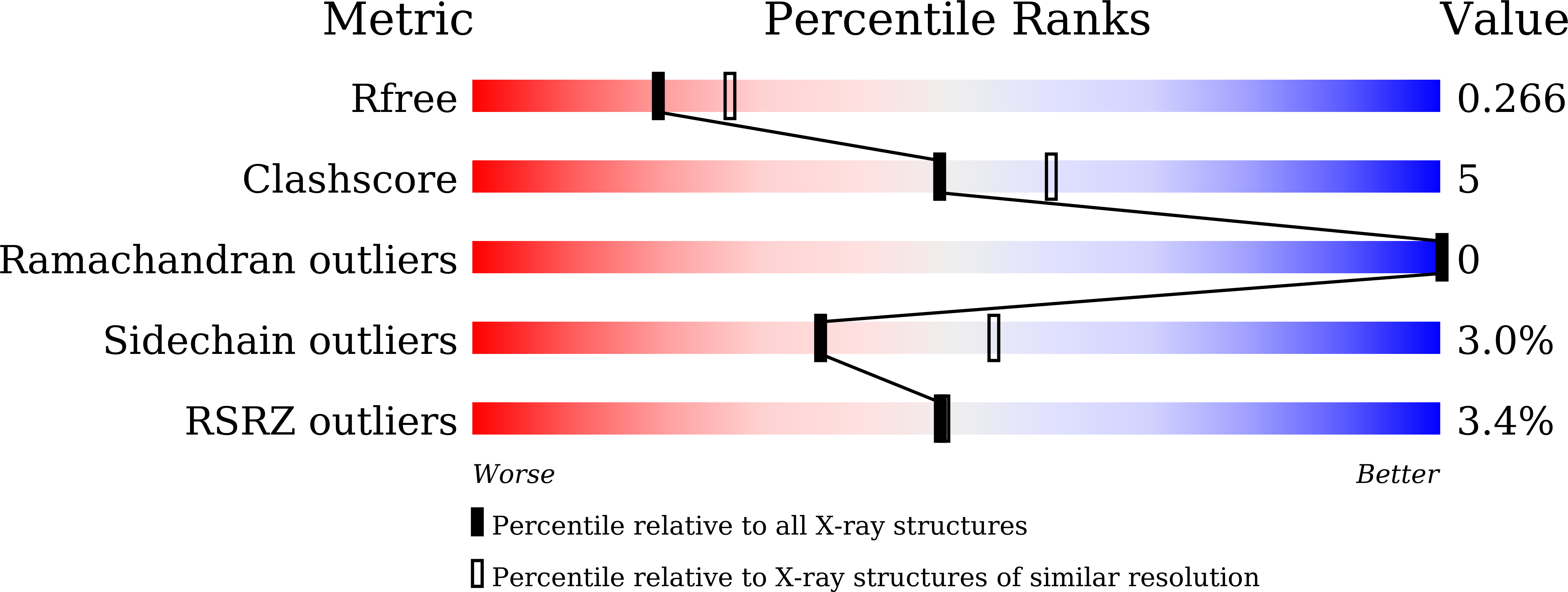Substrate binding and catalytic mechanism of UDP-alpha-D-galactofuranose: beta-galactofuranoside beta-(1¡ú5)-galactofuranosyltransferase GfsA.
Oka, T., Okuno, A., Hira, D., Teramoto, T., Chihara, Y., Hirata, R., Kadooka, C., Kakuta, Y.(2024) PNAS Nexus 3: pgae482-pgae482
- PubMed: 39507050
- DOI: https://doi.org/10.1093/pnasnexus/pgae482
- Primary Citation of Related Structures:
8YRL - PubMed Abstract:
UDP-¦Á-D-galactofuranose (UDP-Galf): ¦Â-galactofuranoside ¦Â-(1¡ú5)-galactofuranosyltransferase, known as GfsA, is essential in synthesizing ¦Â-(1¡ú5)-galactofuranosyl oligosaccharides that are incorporated into the cell wall of pathogenic fungi. This study analyzed the structure and function of GfsA from Aspergillus fumigatus . To provide crucial insights into the catalytic mechanism and substrate recognition, the complex structure was elucidated with manganese (Mn 2+ ), a donor substrate product (UDP), and an acceptor sugar molecule (¦Â-galactofuranose). In addition to the typical GT-A fold domain, GfsA has a unique domain formed by the N and C termini. The former interacts with the GT-A of another GfsA, forming a dimer. The active center that contains Mn 2+ , UDP, and galactofuranose forms a groove structure that is highly conserved in the GfsA of Pezizomycotina fungi. Enzymatic assays using site-directed mutants were conducted to determine the roles of specific active-site residues in the enzymatic activity of GfsA. The predicted enzyme-substrate complex model containing UDP-Galf characterized a specific ¦Â-galactofuranosyltransfer mechanism to the 5'-OH of ¦Â-galactofuranose. Overall, the structure of GfsA in pathogenic fungi provides insights into the complex glycan biosynthetic processes of fungal pathogenesis and may inform the development of novel antifungal therapies.
Organizational Affiliation:
Department of Biotechnology and Life Sciences, Faculty of Biotechnology and Life Sciences, Sojo University, 4-22-1 Ikeda, Nishi-ku, Kumamoto 860-0082, Japan.


















